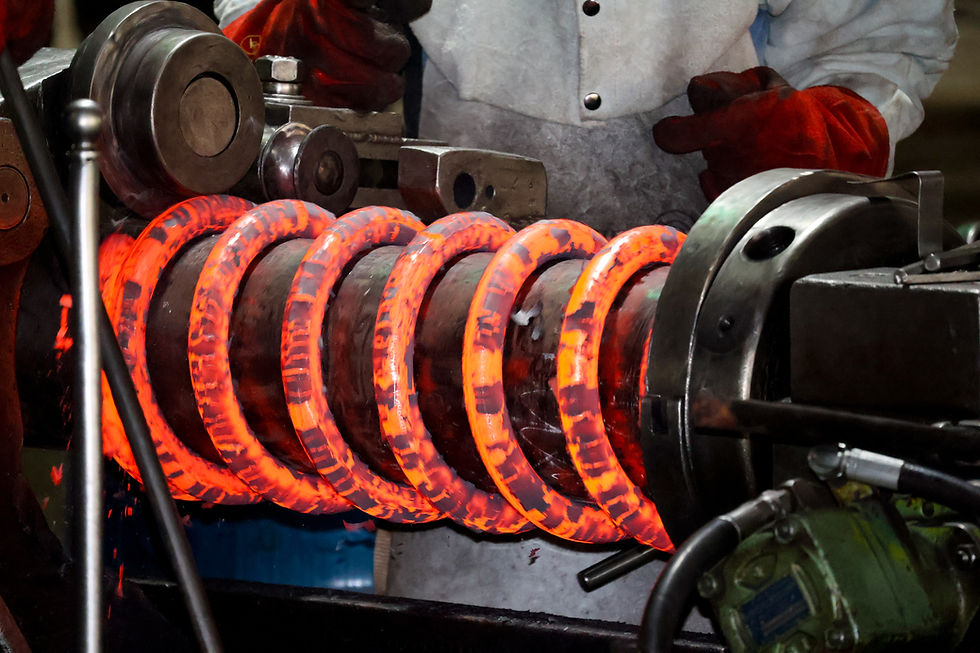Unveiling the Power of Railway Bogie Springs
- Woodhead Heavy Coiling

- May 16, 2024
- 2 min read
For every passenger enjoying a smooth journey or ton of cargo delivered safely, a silent hero
plays a crucial role beneath the train: the railway bogie spring. Nestled within the bogie, the
undercarriage of a train carriage, these specialised springs act as the unseen guardians of the rails, ensuring a comfortable and safe ride.
But what exactly are bogie springs, and how do they contribute to train performance? Let's delve deeper into the world of these essential components.
The Two Titans: Primary and Secondary Springs
Railway bogie springs come in two main forms, each tackling a specific challenge.
Primary Suspension Springs
These robust springs directly connect the axle boxes to the bogie frame. They function as the
first line of defence, absorbing vertical shocks and vibrations caused by uneven tracks, bumps, and curves. By mitigating these impacts, primary springs protect the wheels and axles from excessive stress, ultimately extending their lifespan. More importantly, they significantly improve passenger comfort and cargo integrity by reducing jolting and bouncing within the carriages.
Secondary Suspension Springs
These springs provide an additional layer of comfort and stability. They connect the bogie frame to the train carriage, further dampening vibrations and minimising noise transmission into the passenger compartments. Additionally, secondary springs help maintain a level ride height for the carriage, even when the train is unevenly loaded across axles. This ensures optimal performance and prevents excessive sway during travel.
Material Matters: Engineered for Toughness
Considering the immense weight a train carries and the constant dynamic forces encountered on tracks, bogie springs require exceptional durability. They are typically manufactured from high-strength steel alloys specifically designed to withstand these demanding conditions. These alloys provide the necessary strength and elasticity to absorb impact and return to their original shape, ensuring long-lasting performance.
The Benefits of Bogie Springs
The effective use of bogie springs contributes significantly to various aspects of train operation.
Enhanced Passenger and Cargo Comfort: Smoother rides translate to reduced
passenger fatigue and a minimised risk of damage to cargo.
Reduced Track Wear: By mitigating shock transferred to the wheels and axles, bogie springs help extend the lifespan of the tracks themselves. Less wear and tear translates to lower maintenance costs and improved overall efficiency.
Improved Safety: Springs play a role in maintaining optimal wheel-track contact, enhancing train stability and reducing the risk of derailment. This is a crucial factor for ensuring the safety of passengers and cargo.
While often unseen, railway bogie springs are fundamental to a safe, comfortable, and efficient train journey. Their ability to absorb shocks, dampen vibrations, and maintain stability makes them an essential component of the railway industry. The next time you embark on a train ride, take a moment to appreciate these silent heroes ensuring a smooth and enjoyable journey.



Comments